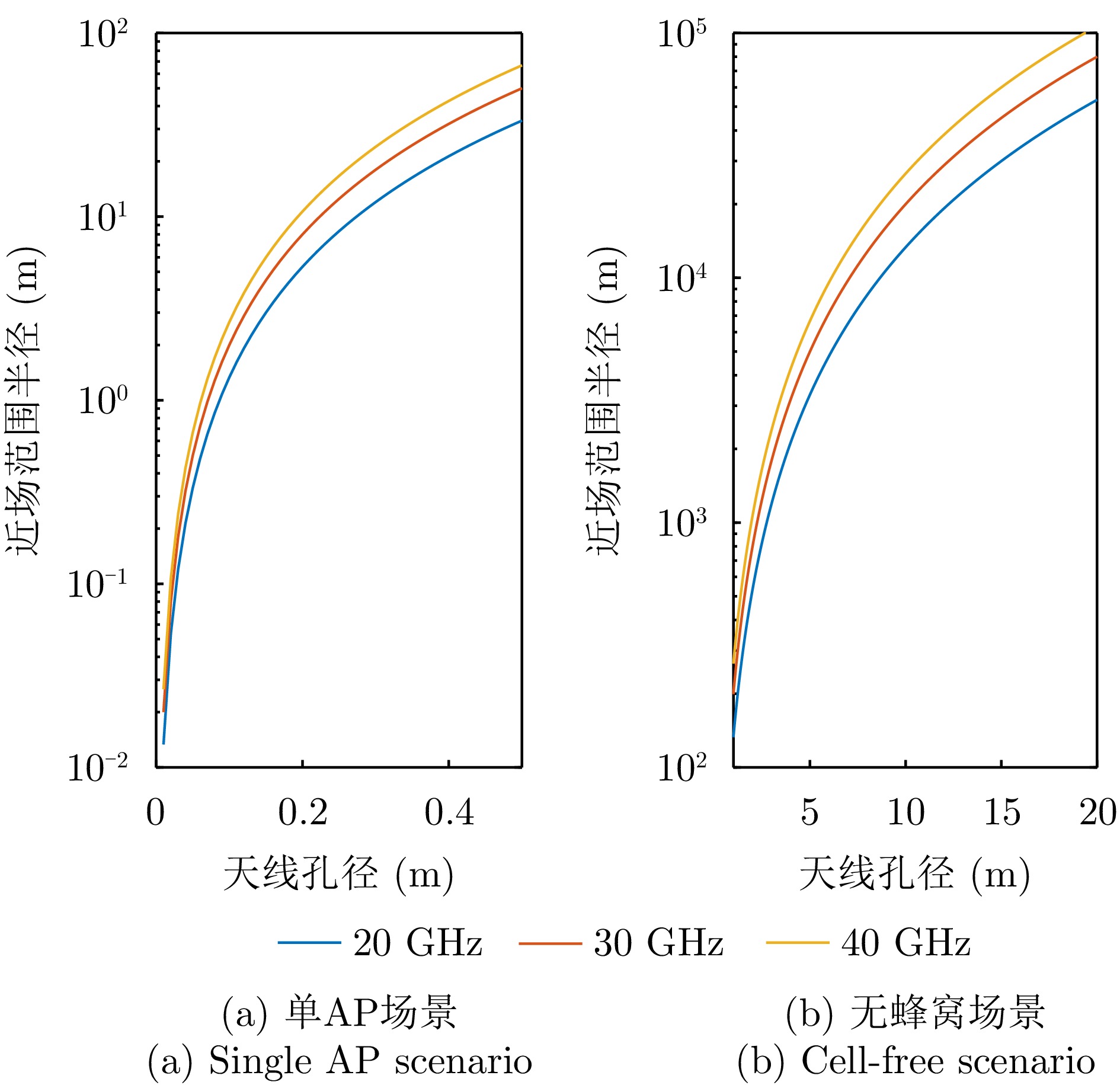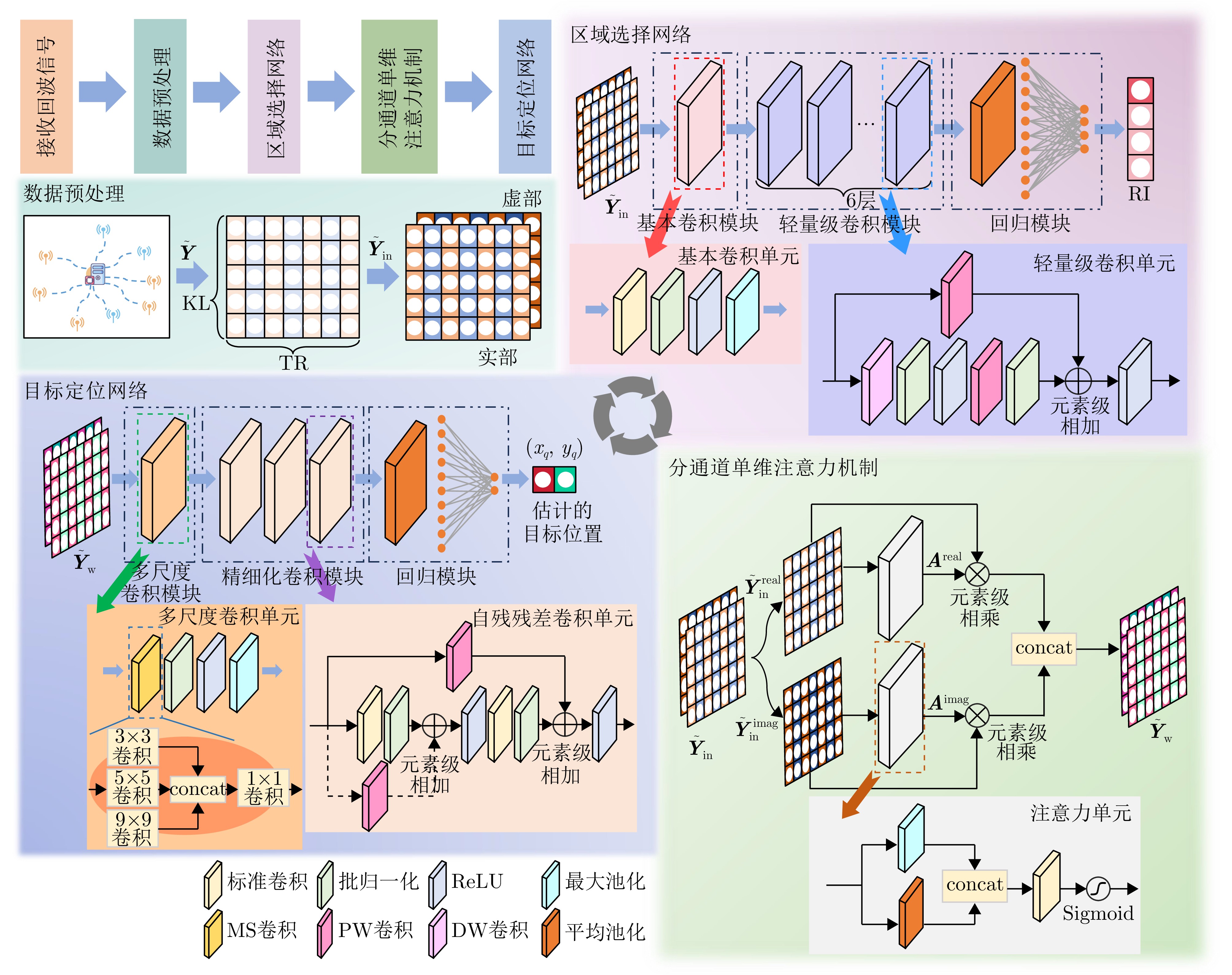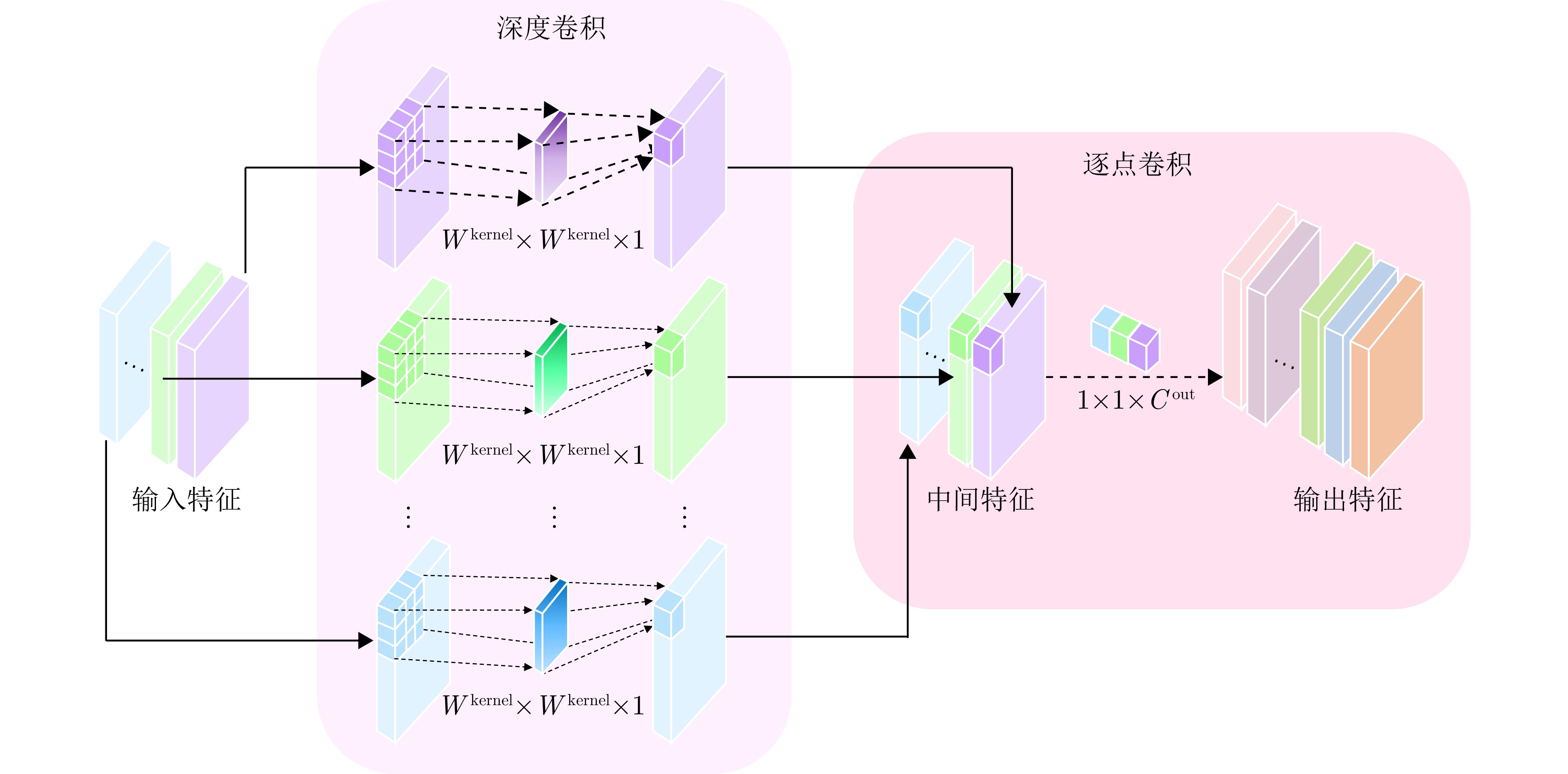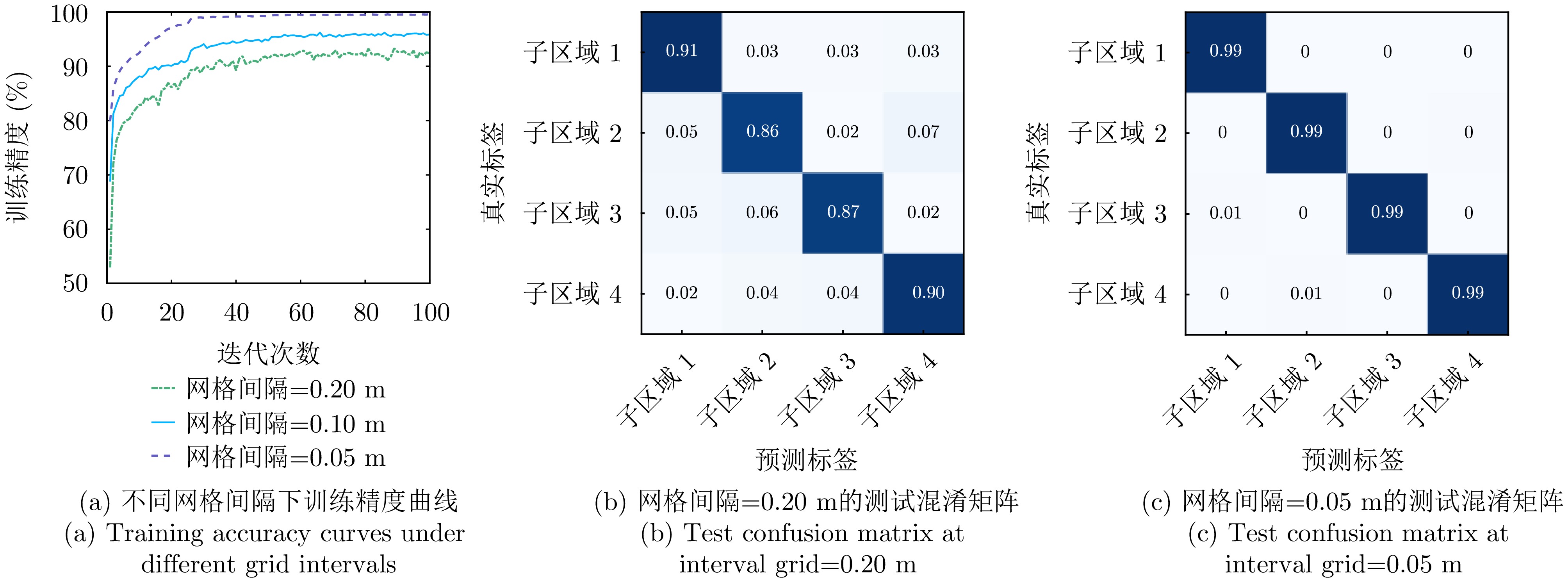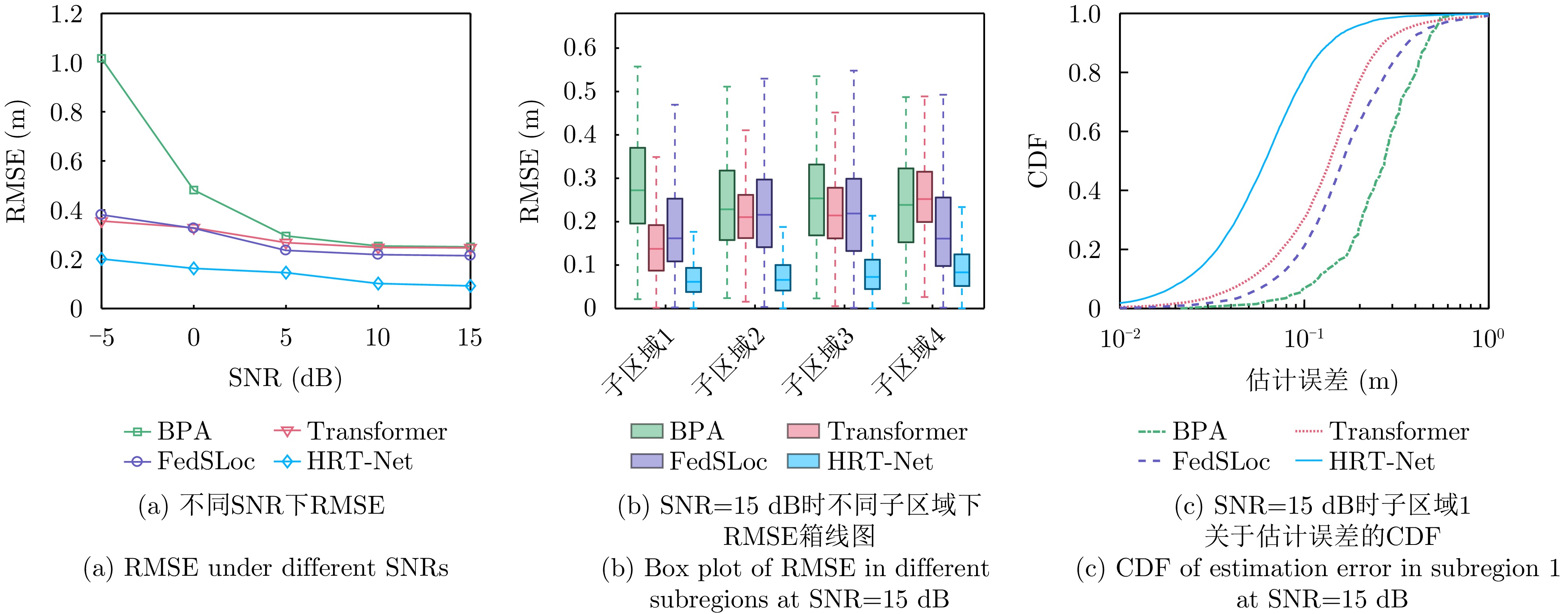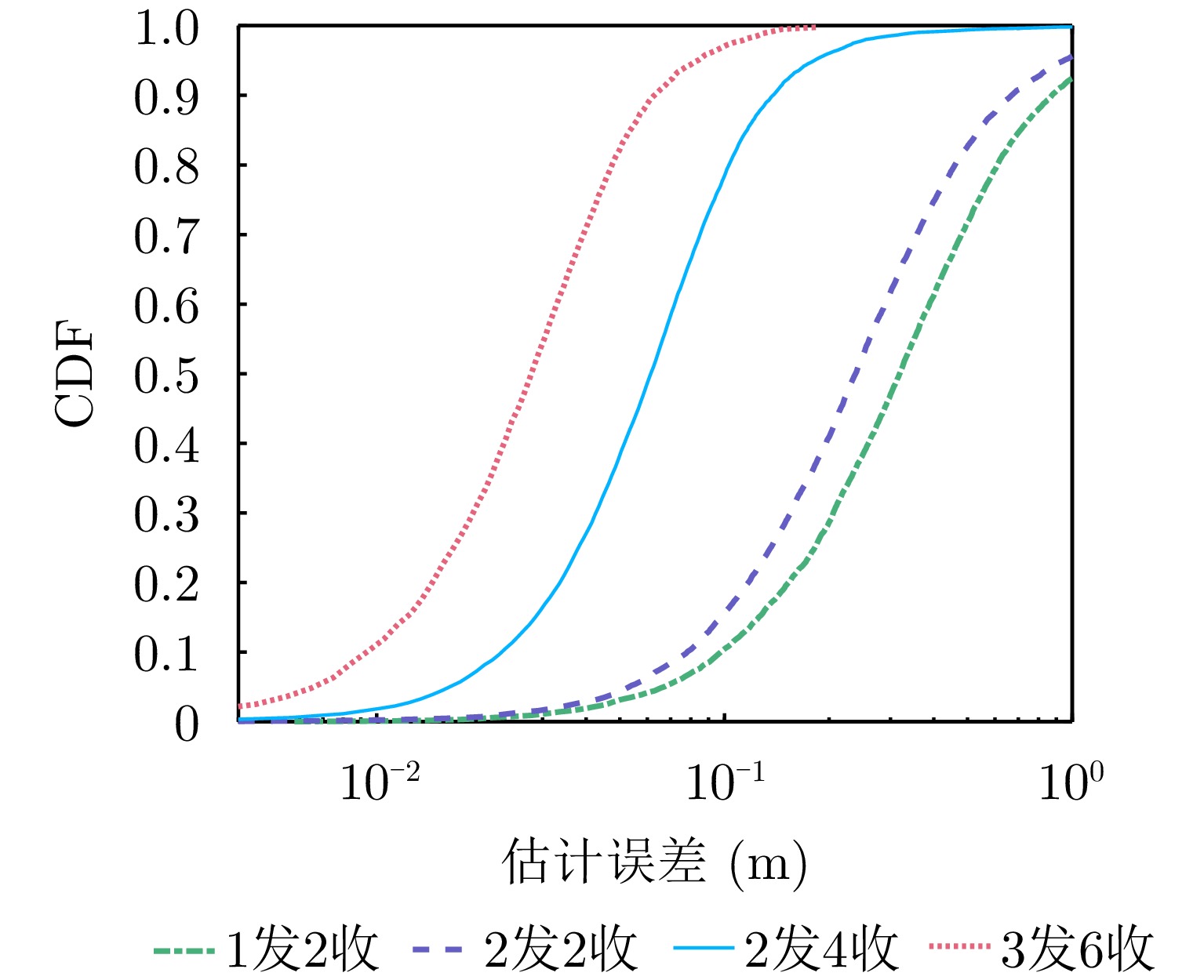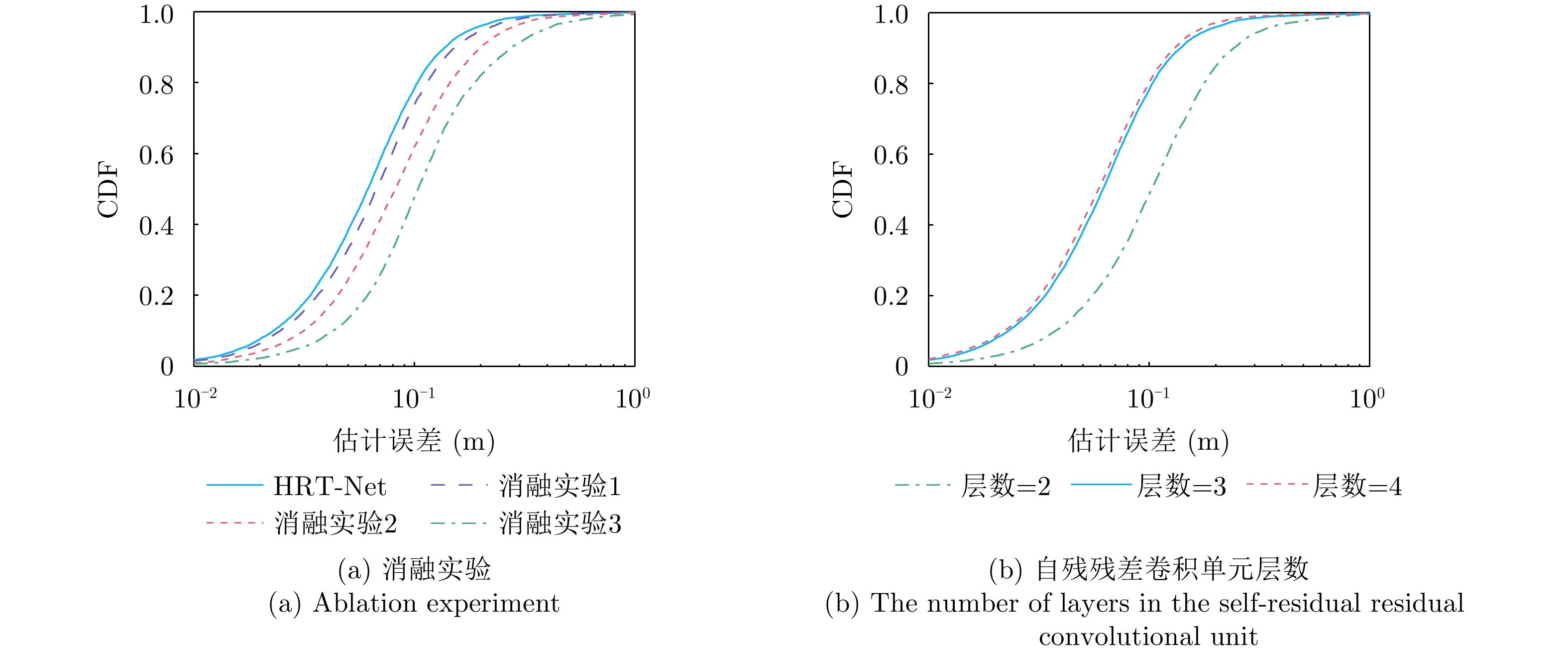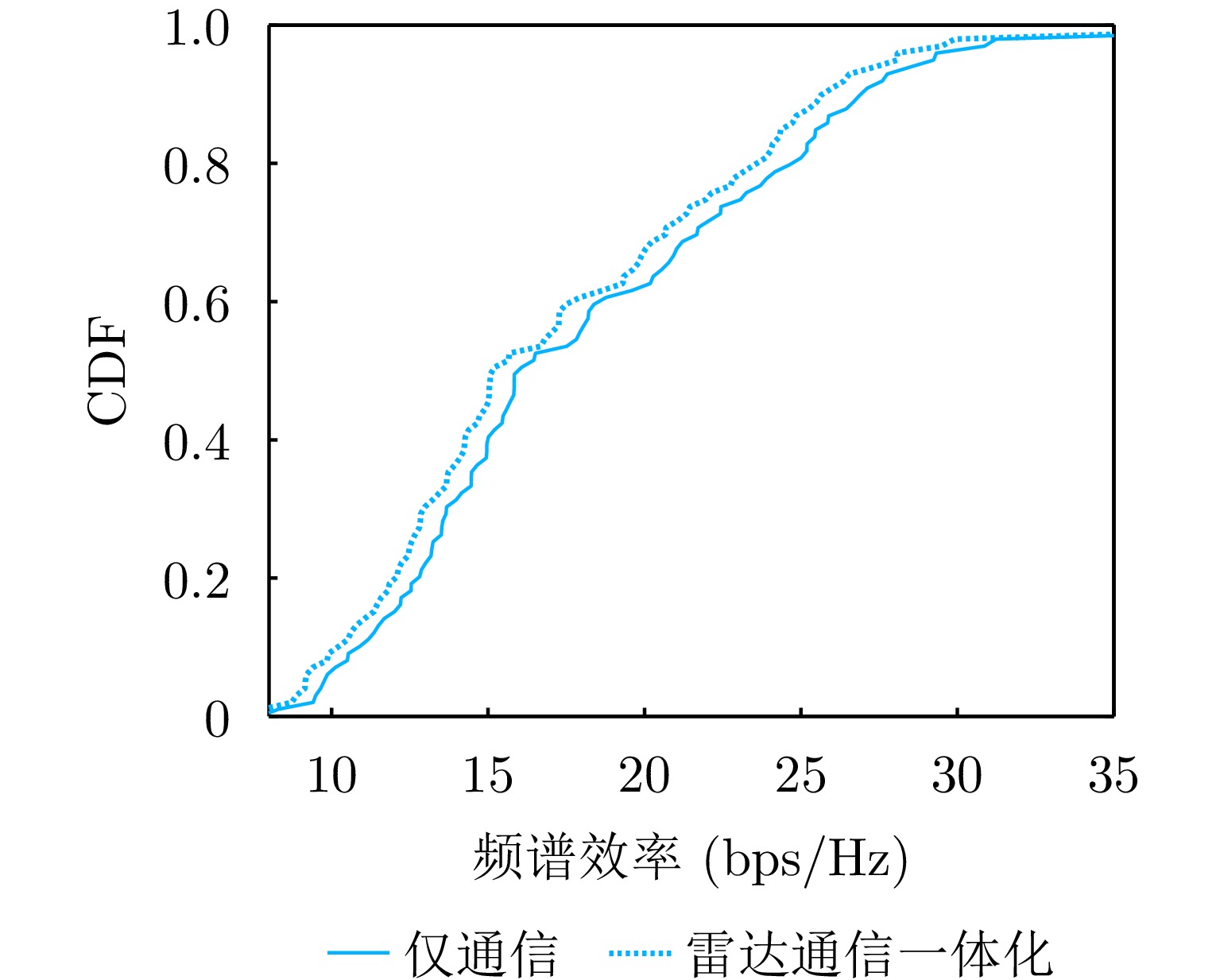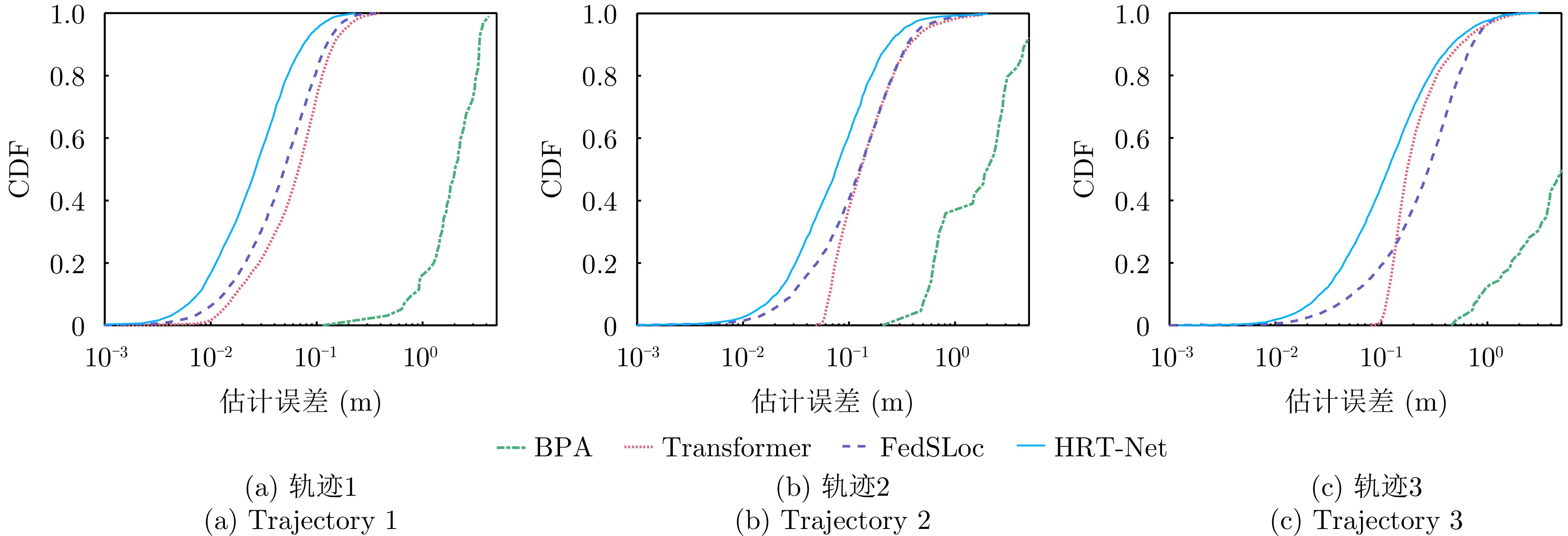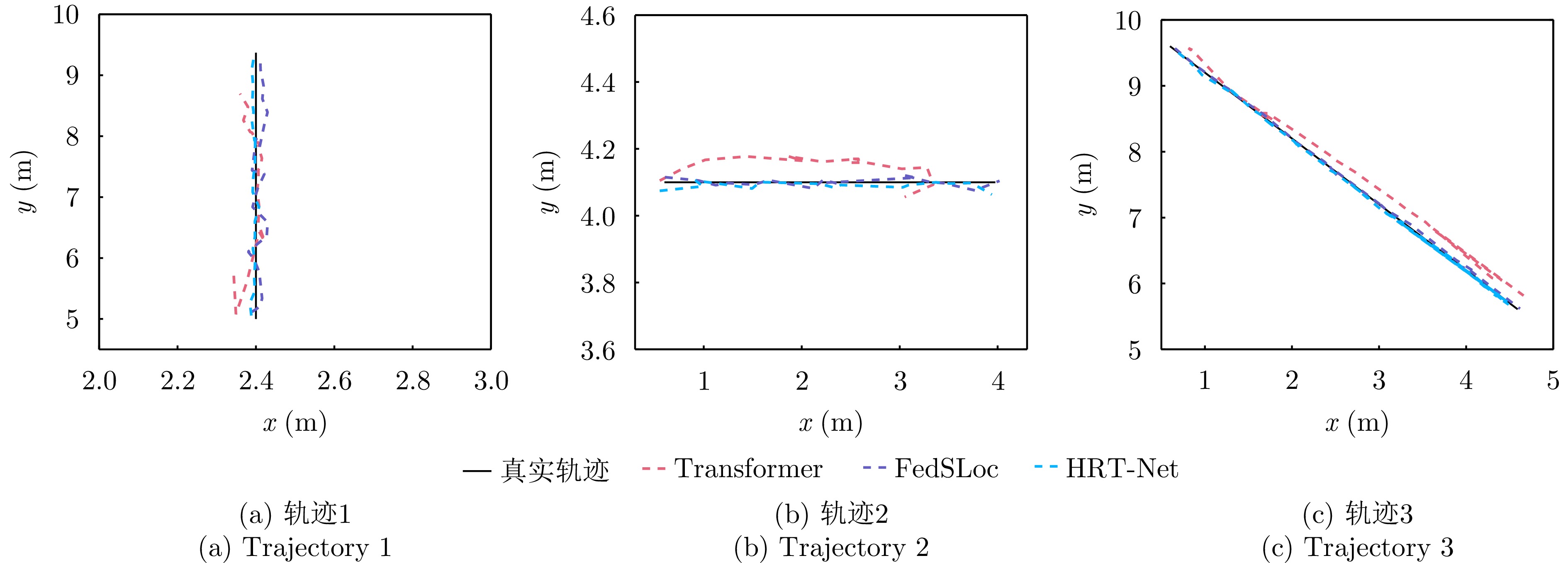| [1] |
MAO Weihao, LU Yang, LIU Jingxian, et al. Beamforming design in cell-free massive MIMO integrated sensing and communication systems[C]. GLOBECOM 2023-2023 IEEE Global Communications Conference, Kuala Lumpur, Malaysia, 2023: 546–551. doi: 10.1109/GLOBECOM54140.2023.10437290. |
| [2] |
马丁友, 刘祥, 黄天耀, 等. 雷达通信一体化: 共用波形设计和性能边界[J]. 雷达学报, 2022, 11(2): 198–212. doi: 10.12000/JR21146. MA Dingyou, LIU Xiang, HUANG Tianyao, et al. Joint radar and communications: Shared waveform designs and performance bounds[J]. Journal of Radars, 2022, 11(2): 198–212. doi: 10.12000/JR21146. |
| [3] |
LIU Fan, ZHENG Le, CUI Yuanhao, et al. Seventy years of radar and communications: The road from separation to integration[J]. IEEE Signal Processing Magazine, 2023, 40(5): 106–121. doi: 10.1109/MSP.2023.3272881. |
| [4] |
YOU Xiaohu, HUANG Yongming, LIU Shengheng, et al. Toward 6G TKμ extreme connectivity: Architecture, key technologies and experiments[J]. IEEE Wireless Communications, 2023, 30(3): 86–95. doi: 10.1109/MWC.004.2200482. |
| [5] |
LU Shihang, LIU Fan, LI Yunxin, et al. Integrated sensing and communications: Recent advances and ten open challenges[J]. IEEE Internet of Things Journal, 2024, 11(11): 19094–19120. doi: 10.1109/JIOT.2024.3361173. |
| [6] |
YIN Hao, HUANG Yuhong, HAN Lincong, et al. Thoughts on 6G integrated communication, sensing and computing networks[J]. SCIENTIA SINICA Informationis, 2023, 53(9): 1838–1842. doi: 10.1360/SSI-2023-0135. |
| [7] |
WANG Yunlong, WU Ying, and SHEN Yuan. Cooperative tracking by multi-agent systems using signals of opportunity[J]. IEEE Transactions on Communications, 2020, 68(1): 93–105. doi: 10.1109/TCOMM.2019.2944605. |
| [8] |
XIE Lei, SONG Shenghui, ELDAR Y C, et al. Collaborative sensing in perceptive mobile networks: Opportunities and challenges[J]. IEEE Wireless Communications, 2023, 30(1): 16–23. doi: 10.1109/MWC.005.2200214. |
| [9] |
NGO H Q, ASHIKHMIN A, YANG Hong, et al. Cell-free massive MIMO versus small cells[J]. IEEE Transactions on Wireless Communications, 2017, 16(3): 1834–1850. doi: 10.1109/TWC.2017.2655515. |
| [10] |
MENG Kaitao, MASOUROS C, PETROPULU A P, et al. Cooperative ISAC networks: Opportunities and challenges[J]. IEEE Wireless Communications, 2024, 1–8. doi: 10.1109/MWC.008.2400151. |
| [11] |
WANG Xinhua, ASHIKHMIN A, and WANG Xiaodong. Wirelessly powered cell-free IoT: Analysis and optimization[J]. IEEE Internet of Things Journal, 2020, 7(9): 8384–8396. doi: 10.1109/JIOT.2020.2990378. |
| [12] |
WEI Chen, XU Kui, SHEN Zhexian, et al. Fingerprint-based localization and channel estimation integration for cell-free massive MIMO IoT systems[J]. IEEE Internet of Things Journal, 2022, 9(24): 25237–25252. doi: 10.1109/JIOT.2022.3195899. |
| [13] |
王鼎, 尹洁昕, 高路, 等. 一种协同二维DOA和TDOA观测量的超视距短波辐射源定位新方法[J]. 雷达学报(中英文), 2024, 13(6): 1135–1156. doi: 10.12000/JR24136. WANG Ding, YIN Jiexin, GAO Lu, et al. A novel cooperative positioning method for over-the-horizon shortwave emitter based on two-dimensional direction-of-arrival and time-difference-of-arrival measurements[J]. Journal of Radars, 2024, 13(6): 1135–1156. doi: 10.12000/JR24136. |
| [14] |
XU Sheng, WU Linlong, DOĞANÇAY K, et al. A hybrid approach to optimal TOA-sensor placement with fixed shared sensors for simultaneous multi-target localization[J]. IEEE Transactions on Signal Processing, 2022, 70: 1197–1212. doi: 10.1109/TSP.2022.3152232. |
| [15] |
YUAN Weijie, WU Nan, GUO Qinghua, et al. TOA-based passive localization constructed over factor graphs: A unified framework[J]. IEEE Transactions on Communications, 2019, 67(10): 6952–6965. doi: 10.1109/TCOMM.2019.2930517. |
| [16] |
朱丹, 徐威远, 陈文娟, 等. 基于光波分复用网络的分布式多目标定位系统[J]. 雷达学报, 2019, 8(2): 171–177. doi: 10.12000/JR19028. ZHU Dan, XU Weiyuan, CHEN Wenjuan, et al. Distributed multi-target localization system based on optical wavelength division multiplexing network[J]. Journal of Radars, 2019, 8(2): 171–177. doi: 10.12000/JR19028. |
| [17] |
DAI Zichao, WANG Gang, JIN Xiaoping, et al. Nearly optimal sensor selection for TDOA-based source localization in wireless sensor networks[J]. IEEE Transactions on Vehicular Technology, 2020, 69(10): 12031–12042. doi: 10.1109/TVT.2020.3011118. |
| [18] |
MENG Fan, LIU Shengheng, GAO Songtao, et al. TDoA positioning with data-driven LoS inference in mmWave MIMO communications[J]. Signal Processing, 2024, 220: 109447. doi: 10.1016/j.sigpro.2024.109447. |
| [19] |
LIU Shengheng, LI Xingkang, MAO Zihuan, et al. Model-driven deep neural network for enhanced AoA estimation using 5G gNB[C]. The 38th AAAI Conference on Artificial Intelligence, Vancouver, Canada, 2024: 214–221. doi: 10.1609/aaai.v38i1.27773. |
| [20] |
WANG Shengchu, JIANG Xianbo, and WYMEERSCH H. Cooperative localization in wireless sensor networks with AOA measurements[J]. IEEE Transactions on Wireless Communications, 2022, 21(8): 6760–6773. doi: 10.1109/TWC.2022.3152426. |
| [21] |
MENG Kaitao, HAN K, MASOUROS C, et al. Network-level ISAC: Performance analysis and optimal antenna-to-BS allocation[J]. arXiv: 2410.06365, 2024. doi: 10.48550/arXiv.2410.06365. |
| [22] |
ZUO Peiliang, PENG Tao, WU Hao, et al. Directional source localization based on RSS-AOA combined measurements[J]. China Communications, 2020, 17(11): 181–193. doi: 10.23919/JCC.2020.11.015. |
| [23] |
ZHANG Zhenkun, REN Hong, PAN Cunhua, et al. Target localization in cooperative ISAC systems: A scheme based on 5G NR OFDM signals[J]. IEEE Transactions on Communications, 2024, 1. doi: 10.1109/TCOMM.2024.3486981. |
| [24] |
YIN Lu, NI Qiang, and DENG Zhongliang. Intelligent multisensor cooperative localization under cooperative redundancy validation[J]. IEEE Transactions on Cybernetics, 2021, 51(4): 2188–2200. doi: 10.1109/TCYB.2019.2900312. |
| [25] |
FIGUEROA M R, BISHOYI P K, and PETROVA M. Optimal weight scheme for fusion-assisted cooperative multi-monostatic object localization in 6G networks[J]. arXiv: 2408.16464, 2024. doi: 10.48550/arXiv.2408.16464. |
| [26] |
JIA Ruo, XU Kui, XIA Xiaochen, et al. Time-sequential cooperative localization for moving sensor in millimeter-wave cell-free massive MIMO system[J]. IEEE Sensors Journal, 2022, 22(22): 22008–22019. doi: 10.1109/JSEN.2022.3211743. |
| [27] |
WEI Zhiqing, XU Ruizhong, FENG Zhiyong, et al. Symbol-level integrated sensing and communication enabled multiple base stations cooperative sensing[J]. IEEE Transactions on Vehicular Technology, 2024, 73(1): 724–738. doi: 10.1109/TVT.2023.3304856. |
| [28] |
PUCCI L, BACCHIELLI T, and GIORGETTI A. Cooperative maximum likelihood target position estimation for MIMO-ISAC networks[J]. arXiv: 2411.05187, 2024. doi: 10.48550/arXiv.2411.05187. |
| [29] |
GAO Peng, LIAN Lixiang, and YU Jinpei. Cooperative ISAC with direct localization and rate-splitting multiple access communication: A Pareto optimization framework[J]. IEEE Journal on Selected Areas in Communications, 2023, 41(5): 1496–1515. doi: 10.1109/JSAC.2023.3240714. |
| [30] |
JIANG Wangjun, WEI Zhiqing, LI Bin, et al. Improve radar sensing performance of multiple roadside units cooperation via space registration[J]. IEEE Transactions on Vehicular Technology, 2022, 71(10): 10975–10990. doi: 10.1109/TVT.2022.3184182. |
| [31] |
TAGLIAFERRI D, MANZONI M, MIZMIZI M, et al. Cooperative coherent multistatic imaging and phase synchronization in networked sensing[J]. IEEE Journal on Selected Areas in Communications, 2024, 42(10): 2905–2921. doi: 10.1109/JSAC.2024.3414609. |
| [32] |
HUANG Yanru, MAZUELAS S, GE Feng, et al. Indoor localization system with NLOS mitigation based on self-training[J]. IEEE Transactions on Mobile Computing, 2023, 22(7): 3952–3966. doi: 10.1109/TMC.2022.3148338. |
| [33] |
LIU Guanying, LIU An, ZHANG Rui, et al. Angular-domain selective channel tracking and Doppler compensation for high-mobility mmWave massive MIMO[J]. IEEE Transactions on Wireless Communications, 2021, 20(5): 2902–2916. doi: 10.1109/TWC.2020.3045272. |
| [34] |
WYMEERSCH H and SECO-GRANADOS G. Radio localization and sensing—part II: State-of-the-art and challenges[J]. IEEE Communications Letters, 2022, 26(12): 2821–2825. doi: 10.1109/LCOMM.2022.3206846. |
| [35] |
LIU Junchen, WANG Tianyu, LI Yuxiao, et al. A transformer-based signal denoising network for AoA estimation in NLoS environments[J]. IEEE Communications Letters, 2022, 26(10): 2336–2339. doi: 10.1109/LCOMM.2022.3187661. |
| [36] |
HE Hangchuan, TANG Yupeng, and GUO Wensheng. Target localization in ISAC system based on BP neural network[C]. 2023 IEEE International Conference on Image Processing and Computer Applications (ICIPCA), Changchun, China, 2023: 444–450. doi: 10.1109/ICIPCA59209.2023.10257773. |
| [37] |
TEDESCHINI B C, KWON G, NICOLI M, et al. Real-time Bayesian neural networks for 6G cooperative positioning and tracking[J]. IEEE Journal on Selected Areas in Communications, 2024, 42(9): 2322–2338. doi: 10.1109/JSAC.2024.3413950. |
| [38] |
ZENG Fan, LIU Ruoyun, SUN Xiaoyu, et al. Multi-static ISAC based on network-assisted full-duplex cell-free networks: Performance analysis and duplex mode optimization[J]. arXiv: 2406.08268, 2024. doi: 10.48550/arXiv.2406.08268. |
| [39] |
ADHIKARY A, RAHA A D, QIAO Yu, et al. Holographic MIMO with integrated sensing and communication for energy-efficient cell-free 6G networks[J]. IEEE Internet of Things Journal, 2024, 11(19): 30617–30635. doi: 10.1109/JIOT.2024.3411695. |
| [40] |
郭帅, 陈婷, 王鹏辉, 等. 基于角度引导Transformer融合网络的多站协同目标识别方法[J]. 雷达学报, 2023, 12(3): 516–528. doi: 10.12000/JR23014. GUO Shuai, CHEN Ting, WANG Penghui, et al. Multistation cooperative radar target recognition based on an angle-guided Transformer fusion network[J]. Journal of Radars, 2023, 12(3): 516–528. doi: 10.12000/JR23014. |
| [41] |
WOO S, PARK J, LEE J Y, et al. CBAM: Convolutional block attention module[C]. The 15th European Conference on Computer Vision (ECCV), Munich, Germany, 2018: 3–19. doi: 10.1007/978-3-030-01234-2_1. |
| [42] |
TEMIZ M, ALSUSA E, and BAIDAS M W. A dual-function massive MIMO uplink OFDM communication and radar architecture[J]. IEEE Transactions on Cognitive Communications and Networking, 2022, 8(2): 750–762. doi: 10.1109/TCCN.2021.3128599. |
| [43] |
HOWARD A G, ZHU Menglong, CHEN Bo, et al. Mobilenets: Efficient convolutional neural networks for mobile vision applications[J]. arXiv: 1704.04861, 2017. doi: 10.48550/arXiv.1704.04861. |
| [44] |
ZHANG Haokui, LI Ying, JIANG Yenan, et al. Hyperspectral classification based on lightweight 3-D-CNN with transfer learning[J]. IEEE Transactions on Geoscience and Remote Sensing, 2019, 57(8): 5813–5828. doi: 10.1109/TGRS.2019.2902568. |
| [45] |
KUMAR A, SHARMA A, BHARTI V, et al. MobiHisNet: A lightweight CNN in mobile edge computing for histopathological image classification[J]. IEEE Internet of Things Journal, 2021, 8(24): 17778–17789. doi: 10.1109/JIOT.2021.3119520. |
| [46] |
AMMAR H A, ADVE R, SHAHBAZPANAHI S, et al. User-centric cell-free massive MIMO networks: A survey of opportunities, challenges and solutions[J]. IEEE Communications Surveys & Tutorials, 2022, 24(1): 611–652. doi: 10.1109/COMST.2021.3135119. |
| [47] |
LU Zhilin, WANG Jintao, and SONG Jian. Multi-resolution CSI feedback with deep learning in massive MIMO system[C]. ICC 2020-2020 IEEE International Conference on Communications (ICC), Dublin, Ireland, 2020: 1–6. doi: 10.1109/ICC40277.2020.9149229. |
| [48] |
HE Kaiming, ZHANG Xiangyu, REN Shaoqing, et al. Deep residual learning for image recognition[C]. 2016 IEEE Conference on Computer Vision and Pattern Recognition, Las Vegas, USA, 2016: 770–778. doi: 10.1109/CVPR.2016.90. |
| [49] |
KINGMA D P and BA J L. Adam: A method for stochastic optimization[C]. The 3rd International Conference on Learning Representations, San Diego, USA, 2015.
|
| [50] |
SAKHNINI A, DE BAST S, GUENACH M, et al. Near-field coherent radar sensing using a massive MIMO communication testbed[J]. IEEE Transactions on Wireless Communications, 2022, 21(8): 6256–6270. doi: 10.1109/TWC.2022.3148035. |
| [51] |
DOSOVITSKIY A, BEYER L, KOLESNIKOV A, et al. An image is worth 16x16 words: Transformers for image recognition at scale[C]. The 9th International Conference on Learning Representations, 2021.
|
| [52] |
LIU Rui, LI Jiamin, LIU Feiyang, et al. Scalable fingerprint-based localization framework for 3D cell-free radio access networks[J]. IEEE Communications Letters, 2024, 28(8): 1840–1844. doi: 10.1109/LCOMM.2024.3414991. |
| [53] |
YIN Jun and VERHELST M. CNN-based robust sound source localization with SRP-PHAT for the extreme edge[J]. ACM Transactions on Embedded Computing Systems, 2023, 22(3): 55. doi: 10.1145/3586996. |
| [54] |
CAO Yang, WANG Pan, ZHENG Kang, et al. Experimental performance evaluation of cell-free massive MIMO systems using COTS RRU with OTA reciprocity calibration and phase synchronization[J]. IEEE Journal on Selected Areas in Communications, 2023, 41(6): 1620–1634. doi: 10.1109/JSAC.2023.3276057. |
| [55] |
WANG Dongming, YOU Xiaohu, HUANG Yongming, et al. Full-spectrum cell-free RAN for 6G systems: System design and experimental results[J]. Science China Information Sciences, 2023, 66(3): 130305. doi: 10.1007/s11432-022-3664-x. |




 Submit Manuscript
Submit Manuscript Peer Review
Peer Review Editor Work
Editor Work





 DownLoad:
DownLoad:
